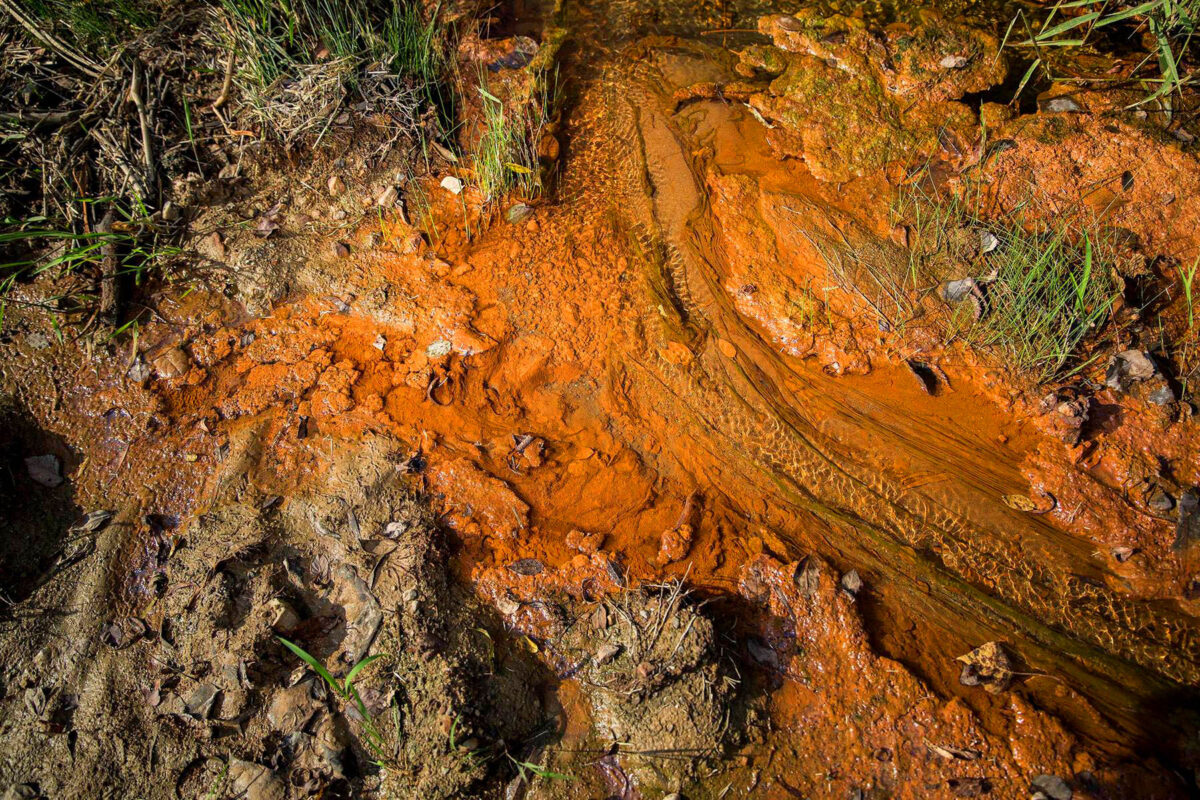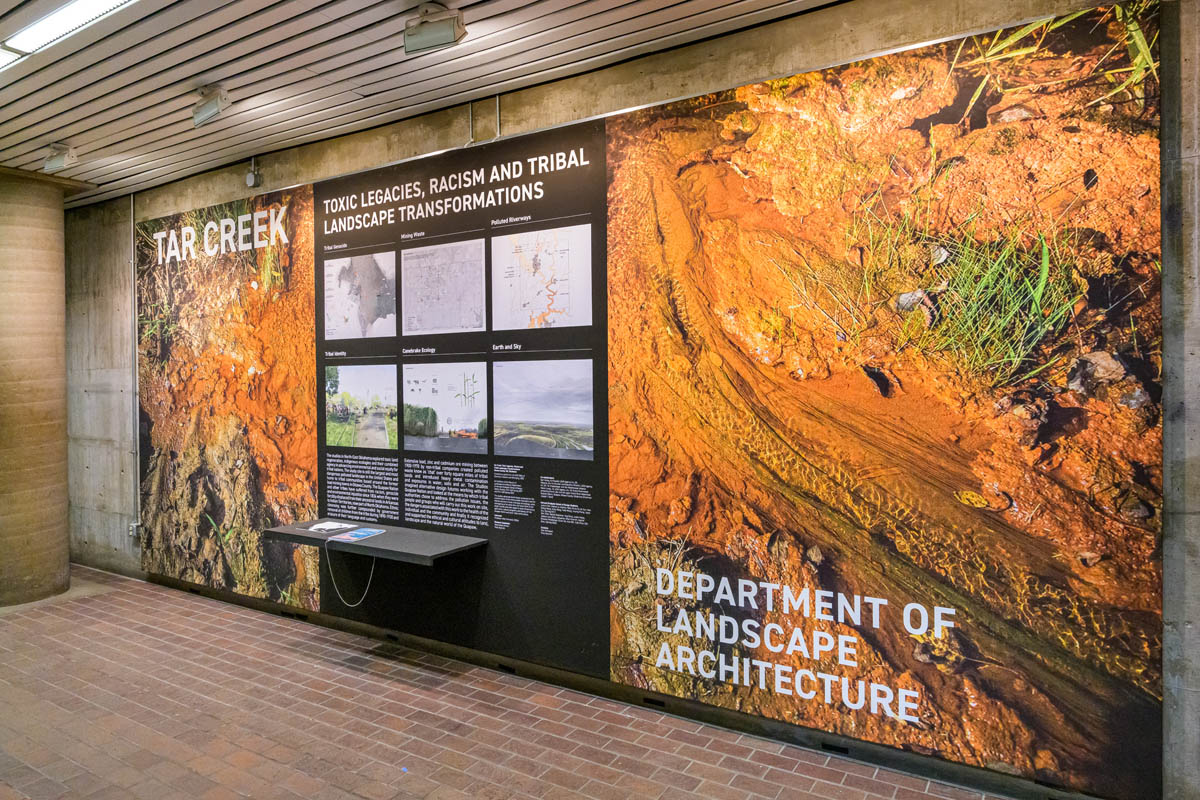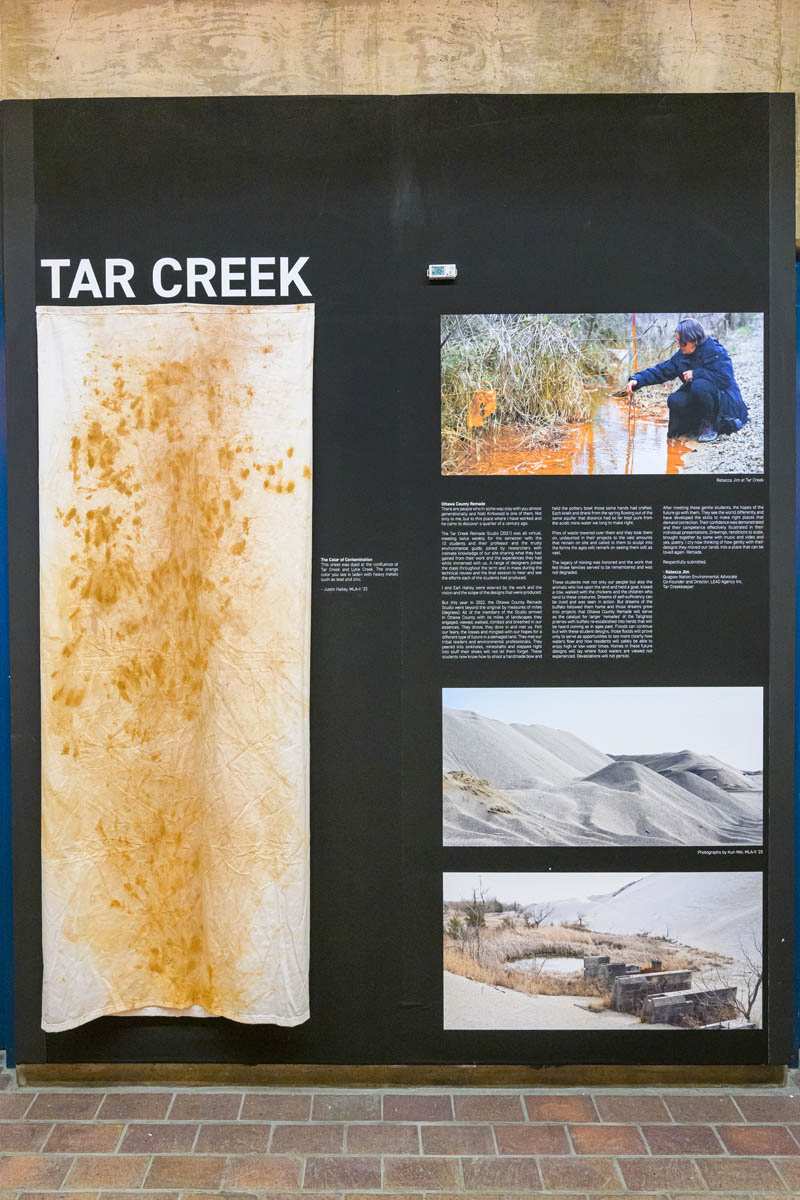Tar Creek: Toxic Legacies, Racism and Tribal Landscape Transformations

The studios in North-East Oklahoma explored toxic land regeneration, indigenous ecologies and their combined agency in advancing environmental and social equity for tribal nations. The study site is still the largest and most dangerous polluted landscape in the United States and home to tribal communities based around the former lead mining towns in Ottawa County. The Quapaw Nation and other tribes have suffered from racism, genocide and environmental injustice since 1834 when they were forcibly displaced from their ancestral lands in Arkansas to Indian Territories, now part of North Oklahoma. Ethnic cleansing was further compounded by government removal of children from the tribe during 1890-1930 and erasure of their language and customs.
Extensive lead, zinc and cadmium ore mining between 1900-1970 by non-tribal companies created polluted waste know as ‘chat’ over forty square miles of tribal lands and introduced heavy metal contamination and exposures in water, soils and air. The Studios imagined alternative design futures working with the Quapaw Nation and looked at the means by which tribal authorities chose to address the pollution issues, the people and groups who will carry out this work on site, the dangers associated with this work to the health of the individual and the community and finally it recognized and supported the ethical and cultural attitudes to land, landscape and the natural world of the Quapaw.
Tar Creek: Toxic Legacies, Racism and Tribal Landscape Transformations
Ottawa County, NE. Oklahoma
Funded by a grant from the GSD Office of Diversity, Inclusion and Belonging, 2022.
An Exhibition of the Results of Landscape Architecture Department of Harvard Graduate School of Design
Option Studios, STU-1409 Spring 2021 and STU-1408 Spring 2022
The studios advanced detail design proposals for the transformation of the mining waste mountains and the intense pollution of local riverways and ecology, while reimagining at the same time, the future form of the larger County area with regard to local infrastructure, agriculture, cultural programs and identity for the Quapaw Nation and other tribal communities.
Instructor
Professor Niall Kirkwood, FASLA
Research Assistants
Mena Wasti Ahmed
Riley Nystrom
Co-collaborators
Earl Hatley, Co-Founder LEAD Agency Inc, OK.
Rebecca Jim, Co-Founder and Executive Director, LEAD Agency, Inc. OK, Tar Creekkeeper with the Waterkeeper Alliance
Martin Lively, JD. LEAD Agency, Inc. OK Grand Riverkeeper protecting Grand Lake and the upper Grand River Watershed
Quapaw Nation, Quapaw, Ottawa County, Oklahoma (Chairman Joseph T. Byrd)
Harvard Graduate School of Design Students
Jackie Chen, Dianne Le, Alykhan Neky, Olivia So, An Sun, Hao (Holly) Wang, Vicky Wang, Yokki Wang, Jinying Zhang, Joyce Zhu. (Spring 2021) Qilin Chen, Rachel Deschner, Ying Dong, Justin Hailey, Jessica Love, Elliot LaGuardia, Riley Nystrom, Scarlet Blossom Rendleman, Oliver Shi, Kun Wei, Yubo Zhao, Geli Zhou. (Spring 2022)

